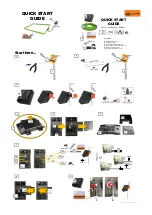
Data Link Procedure 8
8-1
8.
Data Link Procedure
INSTALLATION PRECAUTIONS
• Use the module in the environment for the general specification described in Chapter 4 of
this manual.
Do not use the PLC in a place with dust, soot, conductive dust, corrosive gas (Sea breeze,
Cl
2
, H
2
S, SO
2
, NO
2
or combustible gas, place exposed to high temperature, condensation,
wind or rain or place with vibration or impact.
Using the module outside the range of the general specification or in a place above may
result in electrical shock, fire, malfunctions, or may damage the PLC.
• When drilling screw holes or performing wiring, make sure that cutting chips, wire chips or
other foreign matter does not enter the ventilation window of the module.
Such matter may cause fire, failure or malfunction.
• When the installation work is completed, remove the dust protection sheet from the
ventilation window of the PLC.
If the sheet remains attached, it may cause fire, failure or malfunction.
• Securely connect extension cables to specified connectors.
Poor contact may cause malfunction.
WIRING PRECAUTIONS
• Before beginning any installation or wiring work, make sure all phases of the power supply
have been shut down from the outside.
Incomplete shutdown of the power supply phases may cause electrical shock or damage in
the module.
• Following an installation or wiring work, when turning on the power supply and operating the
PLC, make sure that the terminal cover provided as an accessory has been attached to the
module.
Non-attachment of the cover may cause electrical shock.
• For the CC-Link system, use dedicated cables specified by the manufacturer.
The performance of the CC-Link system cannot be guaranteed with any cable other than
dedicated ones specified by the manufacturer.
For the maximum total extension length and the cable length between stations, observe the
specification described in Chapter 4.
With wiring outside the specification range, normal data transfer cannot be guaranteed.
• Make sure to fix communication cables and power cables connected to the module by
placing them in the duct or clamping them.
Cables not placed in duct or not clamped may hang or shift, allowing them to be accidentally
pulled, which may result in malfunction or damage to the module and the cables.
• When disconnecting a communication/power cable connected to the module, do not hold
the cable area.
For a cable with connector, hold the connector attached to the module.
For a cable connected to a terminal block, loosen screws of the terminal block, then
disconnect the cable.
If a cable is pulled while it is connected to a module, the module may malfunction or the
module and the cable may be damaged.
FX2N-16CCL-M CC-Link System Master Block
Summary of Contents for FX2N-16CCL-M
Page 4: ...FX2N 16CCL M CC Link System Master Block ii ...
Page 6: ...FX2N 16CCL M CC Link System Master Block iv ...
Page 34: ...FX2N 16CCL M CC Link System Master Block System Configuration 3 3 14 MEMO ...
Page 66: ...FX2N 16CCL M CC Link System Master Block Specification 4 4 32 MEMO ...
Page 144: ...FX2N 16CCL M CC Link System Master Block Programming 9 9 16 MEMO ...
Page 172: ...FX2N 16CCL M CC Link System Master Block Communication in Compound System 12 12 10 MEMO ...
Page 192: ...FX2N 16CCL M CC Link System Master Block Appendix 14 14 4 MEMO ...
Page 193: ......
















































